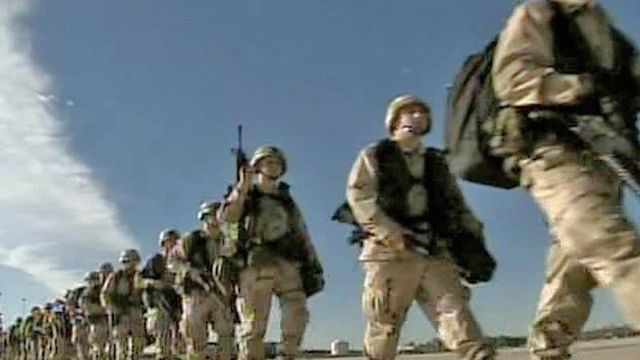Army brass discuss future of warfare at Fort Bragg conference
The Army's top brass and policymakers met Tuesday at a North Carolina Army post to discuss the future of war.
Posted — UpdatedThe three-day conference at the post, home to the Army's Special Operations Command, highlights how the Army plans to adapt to fighting wars where large-scale battles are rare and hit-and-run ambushes are the norm. The military will be asked to execute a wider range of missions that no longer include just fighting the Red Army or insurgents.
"The definition of power is the 21st century is about adaptation," said Gen. Martin Dempsey, commander of the Army Training and Doctrine Command.
Anthony H. Cordesman, a national security expert at the Center for Strategic and International Studies in Washington, said firepower isn't enough anymore because it is unlikely the United States will again fight conventional wars like World War II and the first Gulf War.
“The nature of warfare really doesn’t change with time. What really changes is the character of warfare – who the enemy is, how the enemy fights,” said Maj. Gen. Thomas Csrnko, commander of the John F. Kennedy Special Warfare Center and School.
Csrnko said victory is harder to define in the new age of warfare: “I think you’re at a process right now where we are looking at the new normal, and I’m not so sure that we can have the victory defined and say we’re done.”
In future conflicts, military members will face an unstable battlefield where they will be asked to not only defeat the enemy, but forge relationships with the locals and rebuild villages.
"The days when you can sit down with a field manual and construct a war game are simply over," Cordesman said. "We are looking at a highly unpredictable war."
Speakers said economic status, population growth and access to resources will play a major role in the future of war. They also said conflicts will look much like Lebanon in 2006, when Israel invaded after being provoked by Hezbollah, a non-state actor with state-of-the-art weapons.
During a Pentagon news conference in June, Defense Secretary Robert Gates said he wanted to rebalance the military so 50 percent can fight traditional conflicts, 10 percent can fight insurgents and the remaining 40 percent can do both.
Tuesday's speakers included Gen. George Casey, chief of staff of the Army; Marine Gen. James N. Mattis, commander of U.S. Joint Forces Command; and Adm. Eric Olson, commander of U.S. Special Operations Command.
All the speakers stressed the need for well-educated leaders who can work independently and understand how to build relationships with local forces. For the next two days, the conference will break into working groups and plan for fighting future wars.
Brian Katulis, a defense expert at the Center for American Progress in Washington, said the conference is part of an ongoing debate as the Army transforms from a force built to fight the Cold War to one ready to handle rogue states and terrorist groups.
"It is like trying to change a large battleship," Katulis said. "You can't turn on a dime."
• Credits
Copyright 2024 by WRAL.com and the Associated Press. All rights reserved. This material may not be published, broadcast, rewritten or redistributed.






